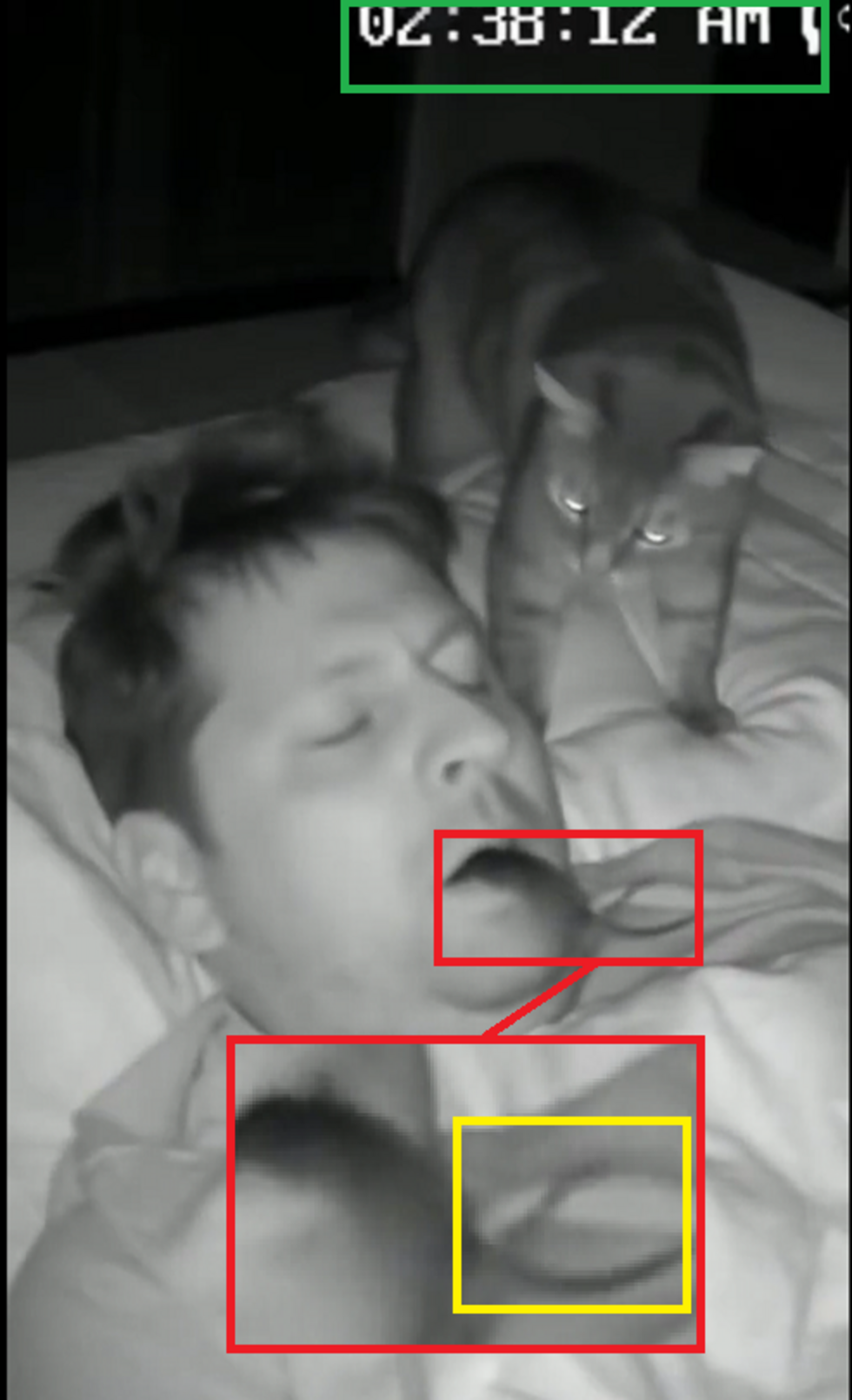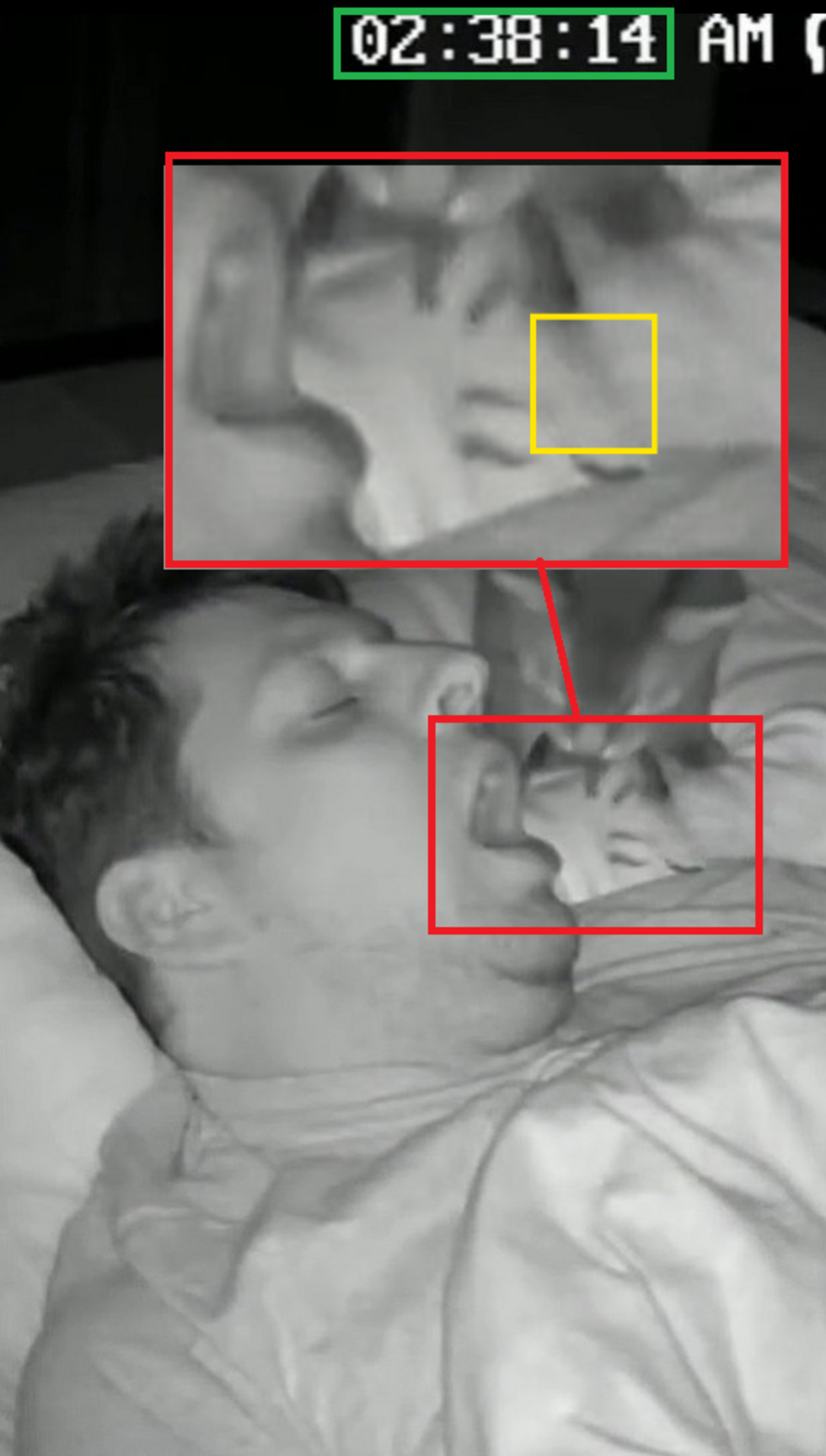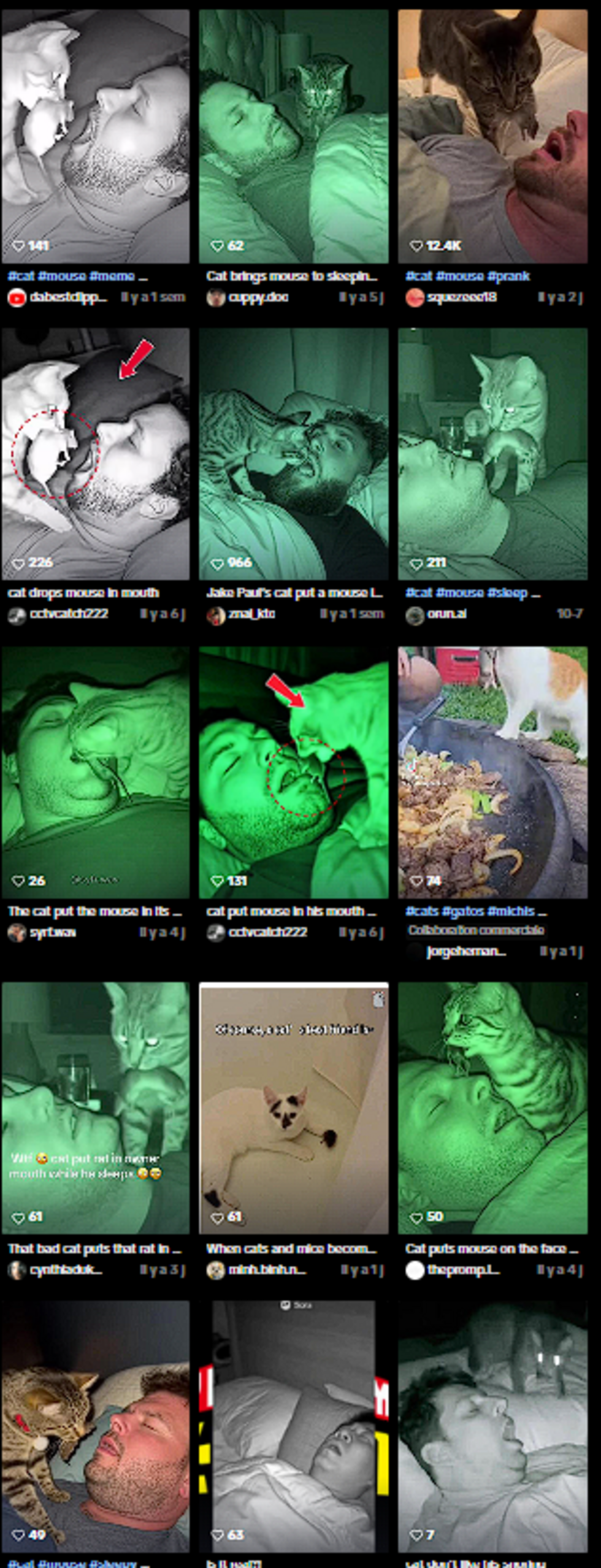"Breakfast is served." A video which garnered at least 31 million views on TikTok and X since October 13 appears to show a highly unusual scene: a cat trying to feed its owner a mouse while he was sleeping with his mouth open. The footage, allegedly from a security camera, shows the feline approaching the sleeping man and dropping a freshly caught mouse directly into his mouth. The owner abruptly wakes up and spits out the unwanted "meal”.
To display this content from X (Twitter), you must enable advertisement tracking and audience measurement.
Anomalies point to AI generation
At first glance, this video looks quite realistic. The movements of the cat and its owner, the camera angle, and the black-and-white grain of the footage might suggest it is a genuine surveillance recording.
A detailed analysis of the video, however, reveals several anomalies suggesting it was likely created using artificial intelligence.
A first initial is the video's erratic timestamp. At the 00:00:07 mark, the time reads "02:38:11". Just one second later, at 00:00:08, it jumps to "02:38:20" – a nine-second leap. The displayed time then continues to fluctuate, advancing to 02:38:29 before suddenly regressing to 02:38:28. While image quality is constantly improving, AI models still struggle with the accurate generation of text and numbers.

Another anomaly is that the mouse the cat is holding seems to have two tails. Even as image generation improves, AI models still struggle with generating limbs correctly. As a result, images of animals, especially rodents, sometimes feature oddly doubled tails.
Watermark erased
Furthermore, it seems the video's artificial origin was deliberately hidden.
AI-generated content often includes a watermark, typically indicating the creation software, to ensure clear identification and prevent misleading use.
If the video of the cat feeding its owner lacks this watermark, it’s most likely because it was erased.
At the 00:00:03 mark, the mouse that the cat offers passes through a blurred area, causing a section of its body to disappear. This anomaly strongly suggests the watermark was intentionally obscured, likely using software, to conceal the video's true origin.

Cat videos generated by Sora 2
Although the specific AI that generated the video cannot be confirmed, its style and visual presentation bear a striking resemblance to a series of similar clips produced by Sora 2, a next-generation artificial intelligence from OpenAI. Launched in late September, Sora 2 is designed to create far more realistic videos than earlier AI models, incorporating highly accurate sound effects and precise physical motion.
A search on TikTok using the keywords "cat" and "mouse" returns a host of alleged surveillance footage videos, notably featuring a cat feeding its sleeping master. Most of these videos display the Sora 2 watermark and are approximately 10 seconds long – a duration that is the standard length for videos generated by this particular AI, and matches the length of the version with the watermark removed.

This is a highly viral social media trend, as explained by a Reddit user commenting on the video whose watermark had been removed:
"How did these AI surveillance videos suddenly become so popular? They're easily hitting millions of views, and yet it only takes about 30 seconds to generate 50 of them if you automate the process."
This article has been translated from the original in French.











 English (US) ·
English (US) ·